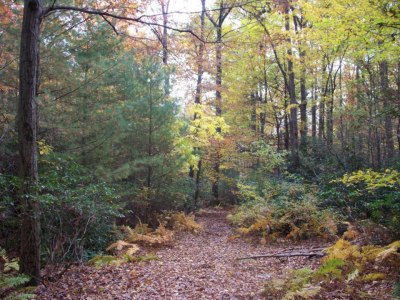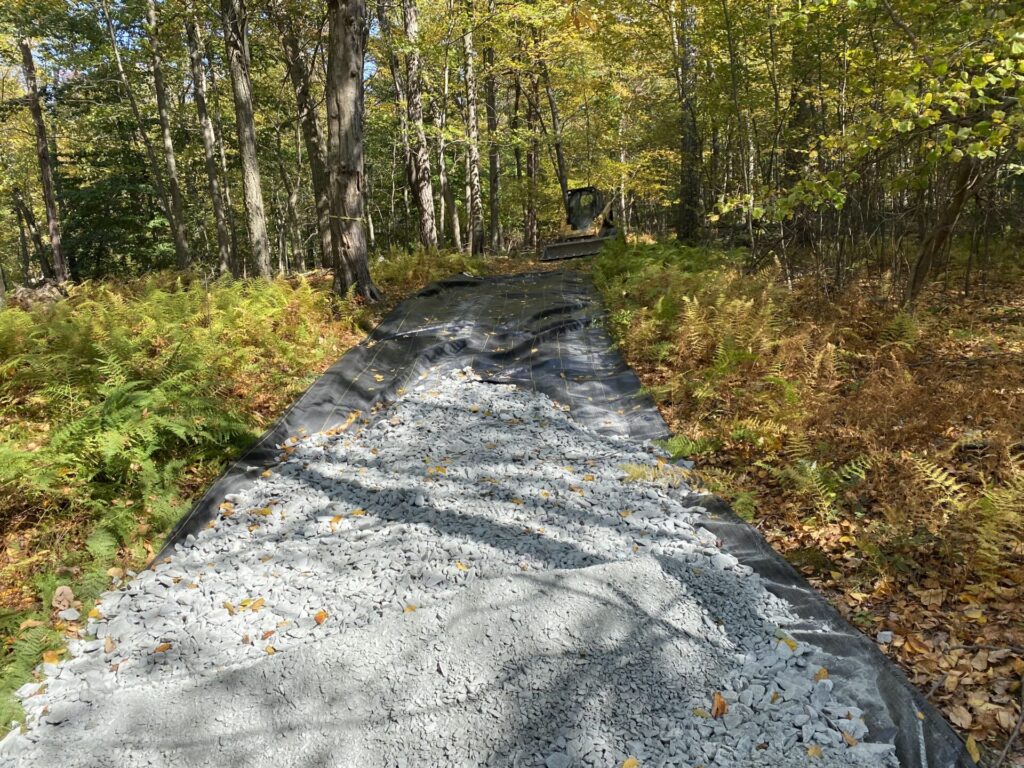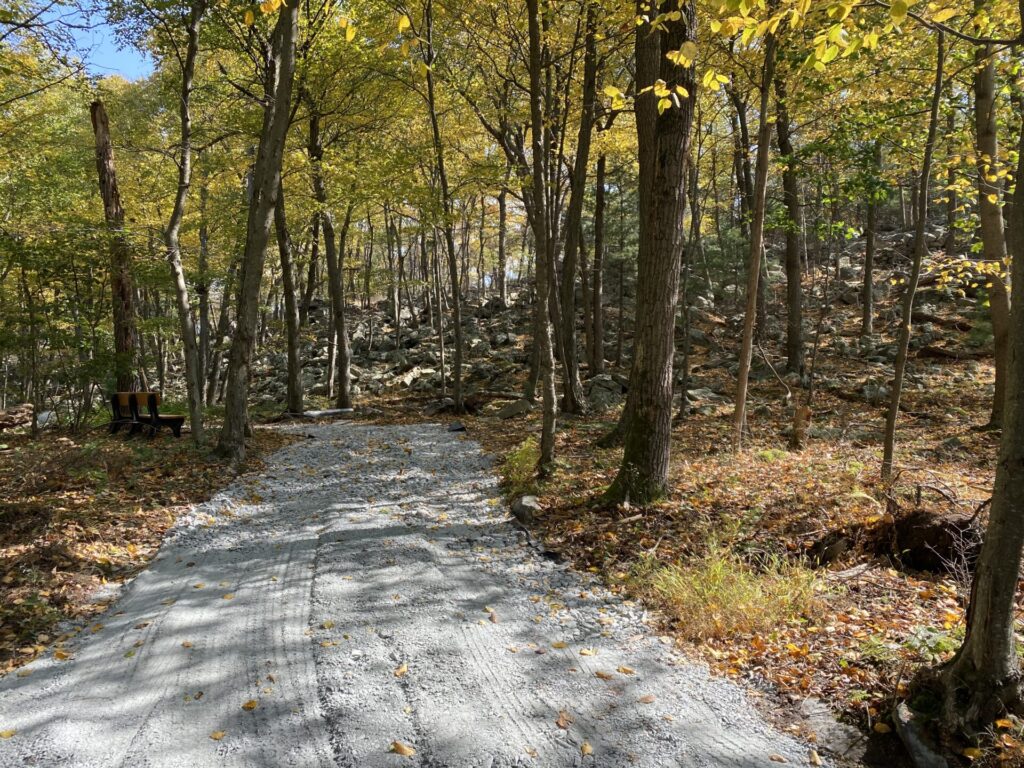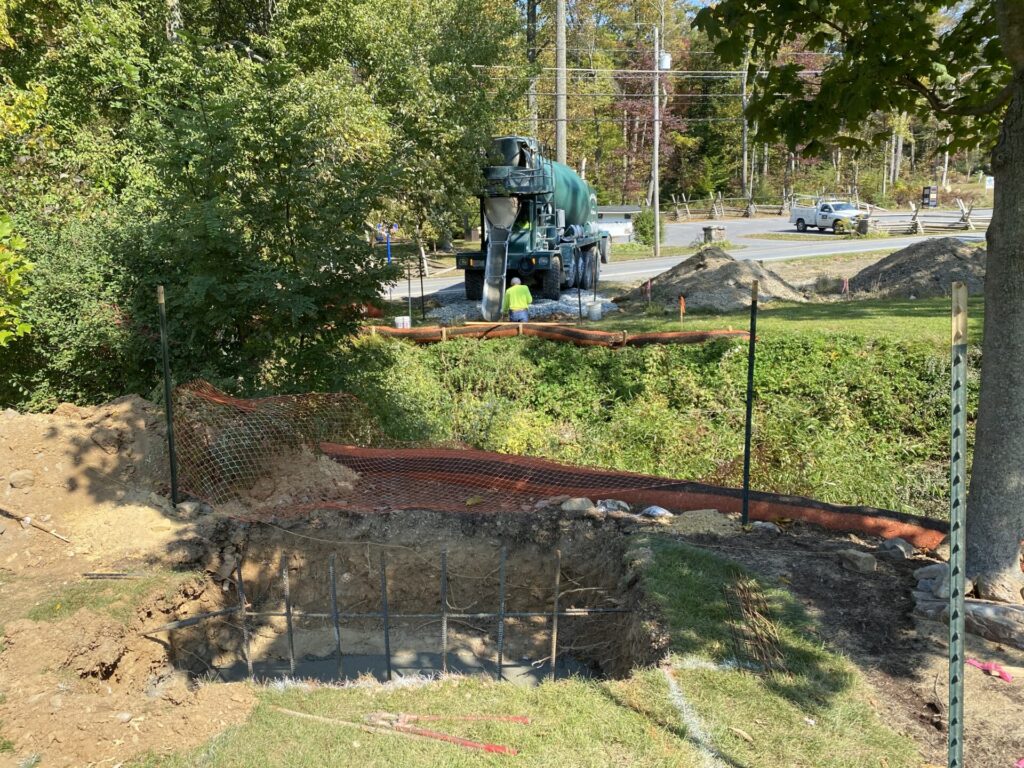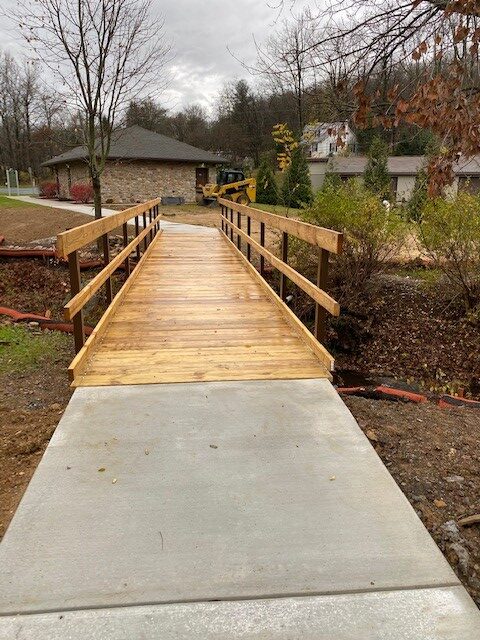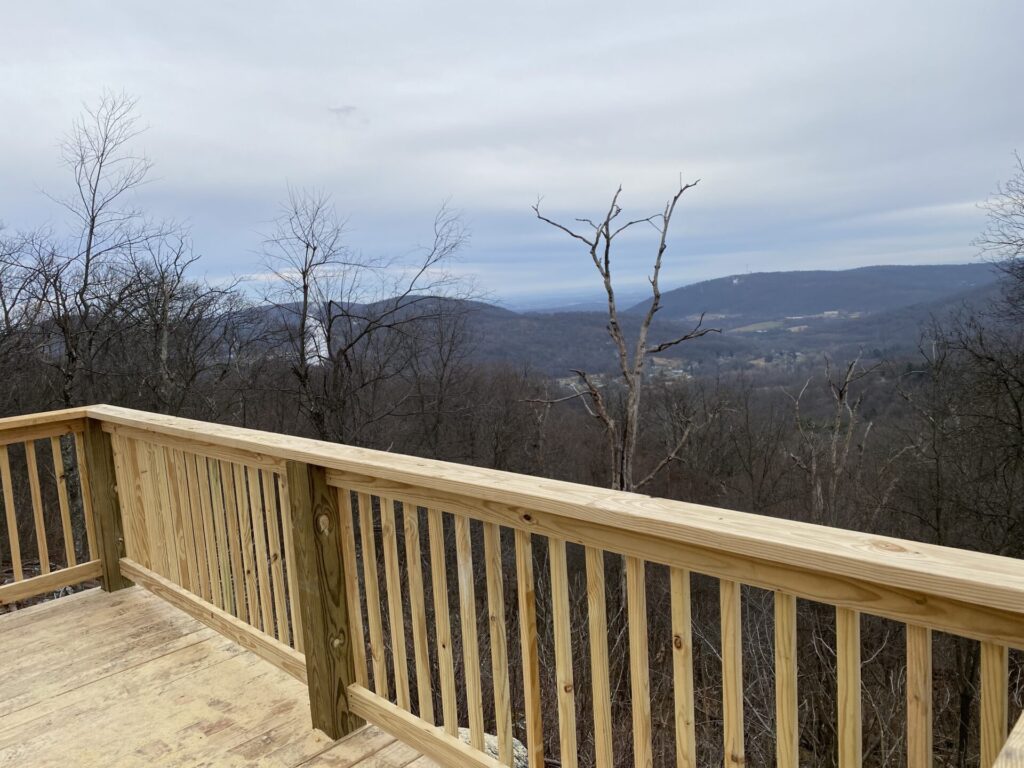It was no accident that the Battle of Monterey Pass took place where it did. Monterey Pass was a part of the Great Philadelphia Wagon Road, and before that the Great Warriors Path. At one time this early colonial road carried more traffic than all other roads combined, and was responsible for the beginning of the westward migration. By 1863 this site was a major transportation hub with roads from Georgetown, Baltimore, Pittsburg, and Philadelphia, converging at the toll house, making it a strategic part of the retreat from Gettysburg. When Lee considered how to retreat to secure home territory south of what is now Williamsport MD, this was one obvious route.

At the time of the retreat, the area looked very different than it does today. People had migrated further and further west, and in the process had cut down an immense number of trees for all manner of construction as well as fuel to blossoming factories and iron furnaces. There was not the thick forest and underbrush we see today.
Sitting on this route is the Toll House used to collect revenue, a building that still stands though modernized many times over the years. The Toll House and adjoining land is of course the site of the most important part of the Battle of Monterey Pass, the Union break through and the beginning of the wagon train attack. The Toll House is as important to the second largest civil war battle in Pennsylvania as Dunker Church is to Antietam, and the McClean House is to Appomattox. The land complements the site and was the scene of fierce hand to hand fighting. But as noted above, the battle is just part of the story of this area.
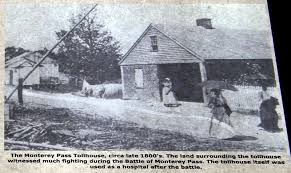
The site of the Battle was recognized by some for its historical significance almost immediately after the war. Multiple requests to federal and state authorities were largely ignored.
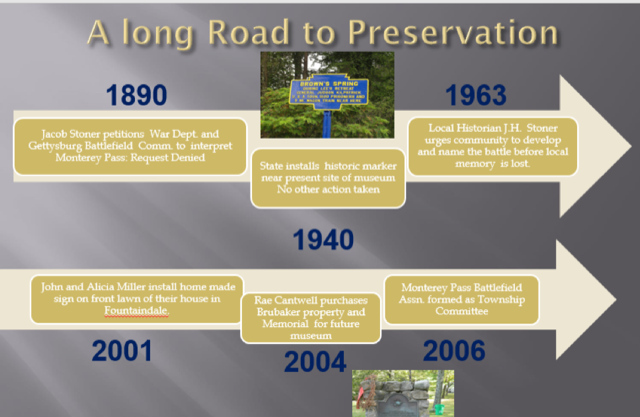
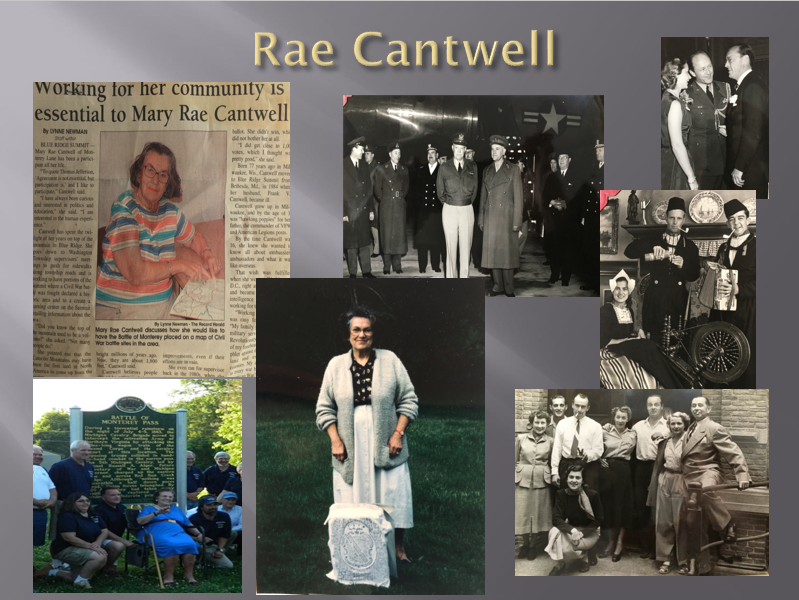
It was not until the mid-2000s that Mary Rae Cantwell intervened. A most interesting person, Ms Cantwell spent time post WWII in Army Intelligence in Europe at the Hague (shown below with Gen. Dwight Eisenhower, and friends Prince Bernhard of the Netherlands, and Fredrick Heineken of the beer). From the 1970s on, in the name of economic development she routinely urged Washington Township to preserve the land until something could be done. Eventually she bought at auction the land on which the museum stands today.
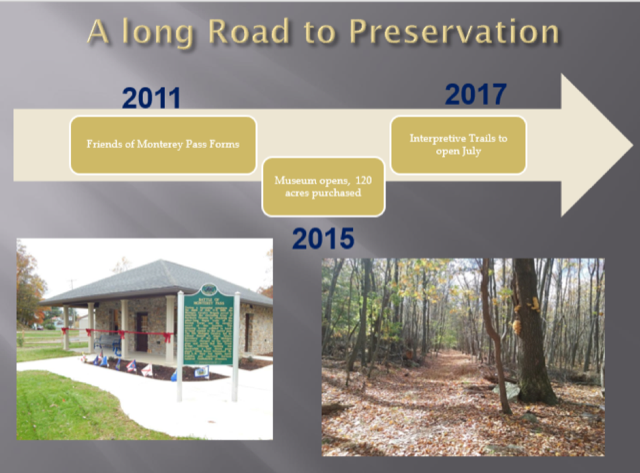
Shortly after that the township created a committee to address development. This committee evolved into what is now Friends of Monterey Pass, Inc., whose first project was to develop plans for the museum and the system of trails that now provides access to territory which had become severely overgrown.
From that point activity accelerated. As Lee Royer of the Friends wrote in 2019
~ ~ ~ ~ ~
The Visionaries were:
Mr. Jacob Stoner,
Mrs. Rae Cantwell,
John and Alicia Miller,
the Washington Township Supervisors,
Lee Royer and
[township manager] Michael Christopher.
The land for the museum came with a mobile home on an eight-foot high block foundation, a stone pavilion and a stone monument built in 1974 that honored the previous land owners’ son, Joe Brubaker, a highly decorated Marine who was killed in action in Vietnam.
The land was purchased by Mary Rae Cantwell, and held until funds could be obtained to acquire the land. In 2010, Washington Township, with a grant from DCNR and private donations, purchased the Brubaker/Cantwell property. In 2011 John Miller created the Monterey Pass Battlefield Master Plan. A Township committee, the Monterey Pass Battlefield Assn, in 2011 became the Friends of Monterey Pass Battlefield, Inc., which in 2014 started to make plans for the site. Lee Royer took on the role of “general contractor” for the building, and pressed various local area contractors for donations of material and labor. The following are Lee’s recollections, enhanced with contributions of other participants, of how the museum came to be.
Our first thought was to remove the trailer and restore the pavilion. Restoring the pavilion turned out not to be possible, so we tore everything down and decided to build all new. And instead of a pavilion, The Friends decided to build a museum. After deciding on a site location and building size, we got to work. In keeping with the spirit of the original Brubaker pavilion (known as “The Last Retreat”), we wanted to use stone from the pavilion and monument but there was not enough to cover the new building so the search for additional stone was on.
We contacted people all over the Mountain about their fence rows and any falling down buildings, asking if we could have their stone.
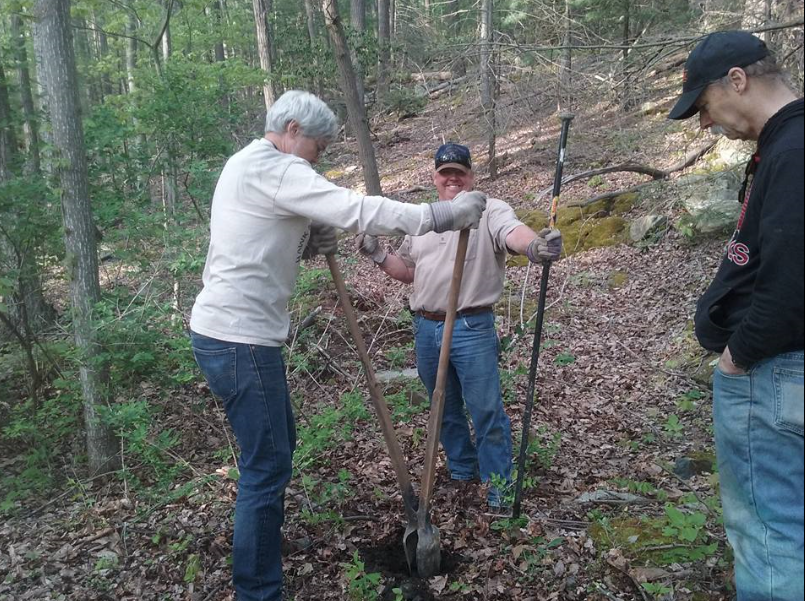
In the meantime, we started digging footers, sewer and water lines, and roof drains. The site was a mess. When local contractor Steve Woodring dug the footers at the last corner, up close to the road, we hit what turned out to be just a pocket of trapped water but at the time we thought it was a spring. It flooded all the ditches, and took a week to drain it all out.
Then with volunteers who knew nothing about construction we taught them how to build and pour footers. Once that was completed they carried concrete block around for the building so that the masons could build the walls. Mark Selman came and built the corners and I laid up the walls.
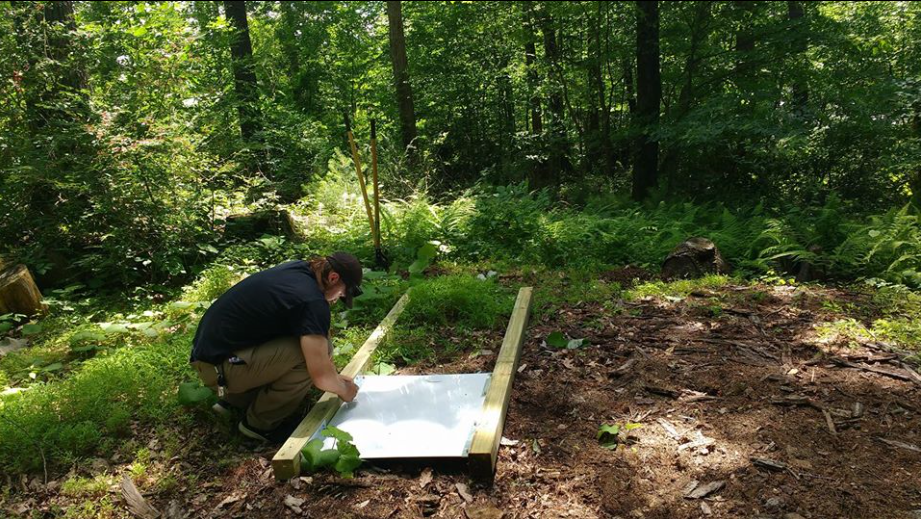
Volunteers helped to frame up the floor for pouring concrete. Mike Henicle from Henicles Plumbing and Heating did all the plumbing for the building as a donation. After pouring the floor, we started to put the walls up, again with whoever showed up to help.
There were numerous people who would show up each weekend to help. Some knew what to do and others needed to be taught but just wanted to help in any way they could. It was a great time.
Once the walls were up Hess Brothers Custom Homes volunteered to help us set the roof trusses. Then it came time to put plywood on the roof and finish the truss work. The angles where the trusses came together were giving us a fit. As it so happened a friend, Andy Zeigler, was driving by and having worked for a roofing company for 30 years saw we were having problems and went home got his tools and came back to show us how to finish the trusses. So many different angles! The following Saturday John Gorman, Randy Kuhns, and Lee Royer started to put the tar paper on the roof. It started getting windy so we were fighting the wind and trying to get the paper nailed down. John and Randy had rolled out a long piece when a gust of wind came along and the tar paper acted like a sail. I thought they were going to sail off the roof. Thankfully, they did not and it reminded us to be more careful after that.

All the while, still hunting for stone, Steve Woodring contacted me, he had been asked by a local developer Geoff Miller of Woodcrest Homes to remove some stone rows. He and I checked them out and they matched our stone and Geoff gave us all that we needed.
The stone in the stone rows were full of dirt, sticks, and the stones from the pavilion had cement on them. They had to be cleaned before the masons could put them in the wall. To save money the stones also had to be placed around the building so we didn’t have to pay the stone masons to do it. The day we planned to start cleaning Ken Brown, a local history teacher showed up with his 9th grade history class and those kids washed and cleaned off all of these stones. They loaded them up in wheel barrels and along with Ralph Dice, who was around 70 years old at the time, wheeled them around the building. It was amazing.
At the same time we had volunteers, including some of Ken Brown’s students, putting on the shingles on the roof. They had to be shown how to hold a hammer and which way and how the shingles go on a roof. It took about two weekends to get done but they were dedicated to getting it done. Then two of us finished putting the caps on the roof on another weekend. We hired Stone Masons from Gettysburg to stone case the building. The Hess’s set the doors and windows. A neighbor from down the road stopped by with his garden tractor with a back hoe on and asked if there was anything he could help with. We had him dig the electric line and the roof drains. It took him about a week to dig those lines with that little tractor but he looked like he was having fun. He would dig a little every night after work.
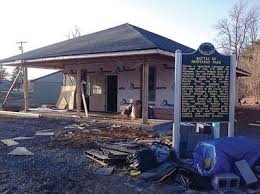
Throughout the process we had been purchasing lumber and equipment rentals from Flohr Lumber Company at cost, and also from JH Myers in Chambersburg. The shingles for the roof were donated by SGI, a local manufacturer of the grit that goes on the roof shingles. They also donated $5,000.00 toward the project. The Blue Ridge Sportsman Association donated $25,000.00 to pay the stone masons. Decker Electric donated the electrical wires and labor in the building.
When we contacted JH Myers about the insulation and their salesman, Jim Chilcote, talked to their insulating company (who are all ex-Marines) and told them about us building a museum for a local Civil War battle. He also told them that the Friends were going to mount the original plaque commemorating Marine Cpl. Joe Brubaker, that was on the family property, onto the Museum building. JH Myers donated the insulation and we had so many volunteer Marines insulating that building they had to take turns. I get emotional just thinking about those guys and their dedication to their Brothers in Arms. Then we hung drywall, we had Adam Walizer finish the drywall. The painting and staining of the interior wood trim was done by Mike Hess and Joe Mackley. Joe also did the porch ceiling and the outside painting,
As we looked at what to do for the soffit of the roof overhang I was talking to Gary Muller, the Owner of Flohr’s Lumber, and he took me back to a dark part of his warehouse where under an inch of dust was this beautiful old Walnut wood that was intended for one of the old summer homes on the Mountain but was never used. It turned out beautiful and really sets the building off.
In order to have low maintenance we contacted a professional who donated the aluminum trim and his time to install it on the porch. He did a fantastic job. The Hess Brothers came back in and finished the kitchen, put up the woodwork, laid the floor and went up on the roof to fix the upside down shingles and other learning experience mistakes that we made during construction. Volunteers including Ralph Dice framed the sidewalk allowing more volunteers to come back out and pour them.
D.L. George and Sons built and donated the parking lot subbase and Valley Quarries paved the lot at cost. Andy and John Gehr regraded and seeded our lawn as their donation to the project.
We decided to plant shrubs along one side and put up a wood fence. Flohr Lumber donated their Bobcat with a post hole digger and Joe Mackley volunteered to run it with absolutely no experience what so ever but he got it done. Clint Rock from the Township was helpful in securing shrubs and trees. I do not know how many families showed up the day we planted the shrubs, put up the fence and spread mulch but it was a beehive of activity.
John and Alicia Miller worked tirelessly to design all the museum exhibitions and acquired a wide range of artifacts that are on display today. They also created the Battlefield Master Plan that was used as a guide for future acquisitions and for the trail interpretive markers that they also designed and helped to install. They are the ones that picked up the story of the Battle where Jacob Stoner left off way back in 1963 and are considered the leading experts on this Civil War Battle.
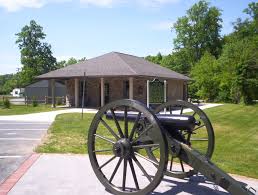
We had contacted all of the States that had Regiments that fought in the Battle of Monterey Pass to see about placing Monuments on our site. Only one, Michigan, agreed to place a Monument at our site and we are so proud of that. They even had a state senator come to the site to dedicate the monument. Steve Patterson (one of our Board Members) convinced F&M Trust to initially donate $15,000 to the Friends. In July of 2015, F&M donated a cannon for our site in honor of Steve, who was retiring from the bank board at that time. K&M Outdoor donated the patio where the cannon now sits, the flag pole was donated by Baers Sign Service, and Will Manning, as an Eagle Scout project, built the kiosk. The museum officially opened in March 2015.
The plaque that Mr. Brubaker had made dedicated to his son Joe was restored to its original condition and mounted on the Museum building. It was dedicated in April of 2015 by the Marines from the Marine Corps League, Gettysburg Detachment, Company B, 4th Light Armored Reconnaissance Battalion, Ft. Detrick, James Donald Funk, Captain USMCR, Carleton Crenshaw, USMCR, Dennis Brubaker (Joe’s cousin), and U.S. Army and Thomas Cantwell, Col.(Ret) U.S.Army. Several Local, County and State officials attended, including Congressman Shuster, the office of Sen.Pat Toomey, David Keller and other County Commissioners, State Rep. Paul Schemel, and well over 150 members of the general public and Armed Forces.
~ ~ ~ ~ ~
After the Museum was constructed, there was still considerable work to be done on the trails. Initially trails were cleared by volunteers over a period of time. The results were excellent, but required considerable effort to keep them passable. For this effort, the Friends worked with the Township to prepare maps and diagrams supporting the full trail system which included scenic overlooks, a Boy Scout encampment area, a bridge over a stream in back of the museum to provide easy access to a picnic area with a pavillion, a playground, bus parking and other features. The Township was retaining a grant writing organization which took all the design work and prepared grant applications to the state.
In early 2019 grants in the amount of approximately $389,000 were awarded. The Township initiated the contracting process which commenced in the summer of 2020. By December 2020, the work had been completed, resulting in the trail complex described here.
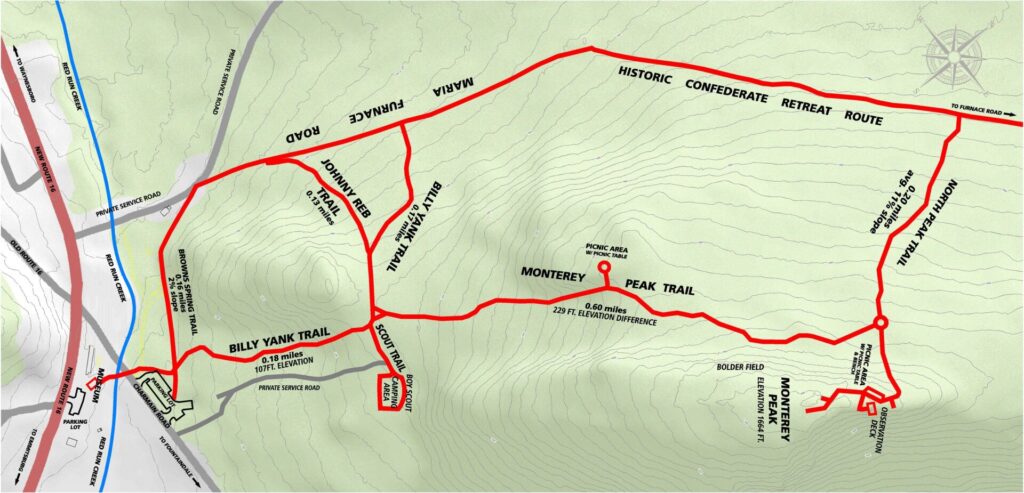
~ ~ ~ ~ ~
The work of Battlefield preservation and interpretation never ends and we continue to find new information about the battle, and discover opportunities for acquisition and preservation. We are in the process of developing a plan to acquire the historic Toll House and adjacent 3 acres. The Battlefield Master plan has identified other battle-related properties to consider when they come on the market. In addition, we are partnering with local organizations to expand the public’s awareness of this unique site and of other historic and natural resources in the surrounding area.

